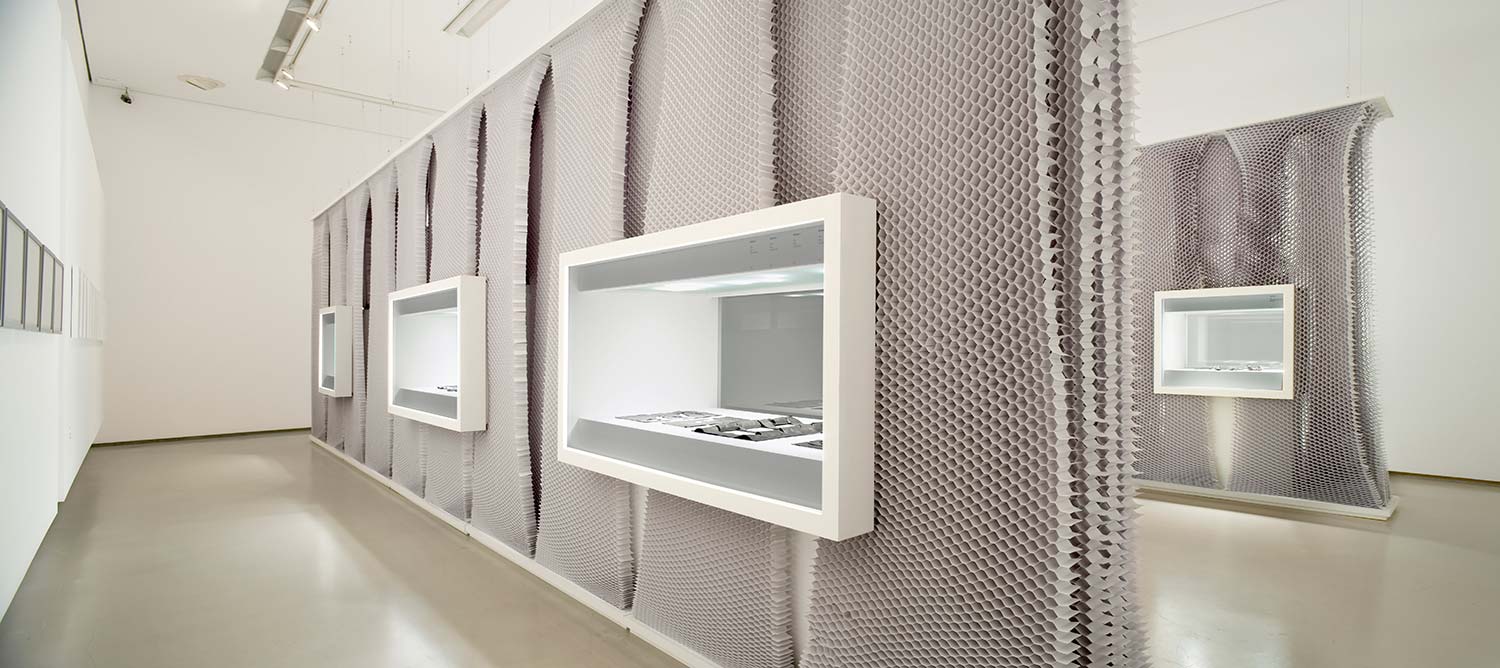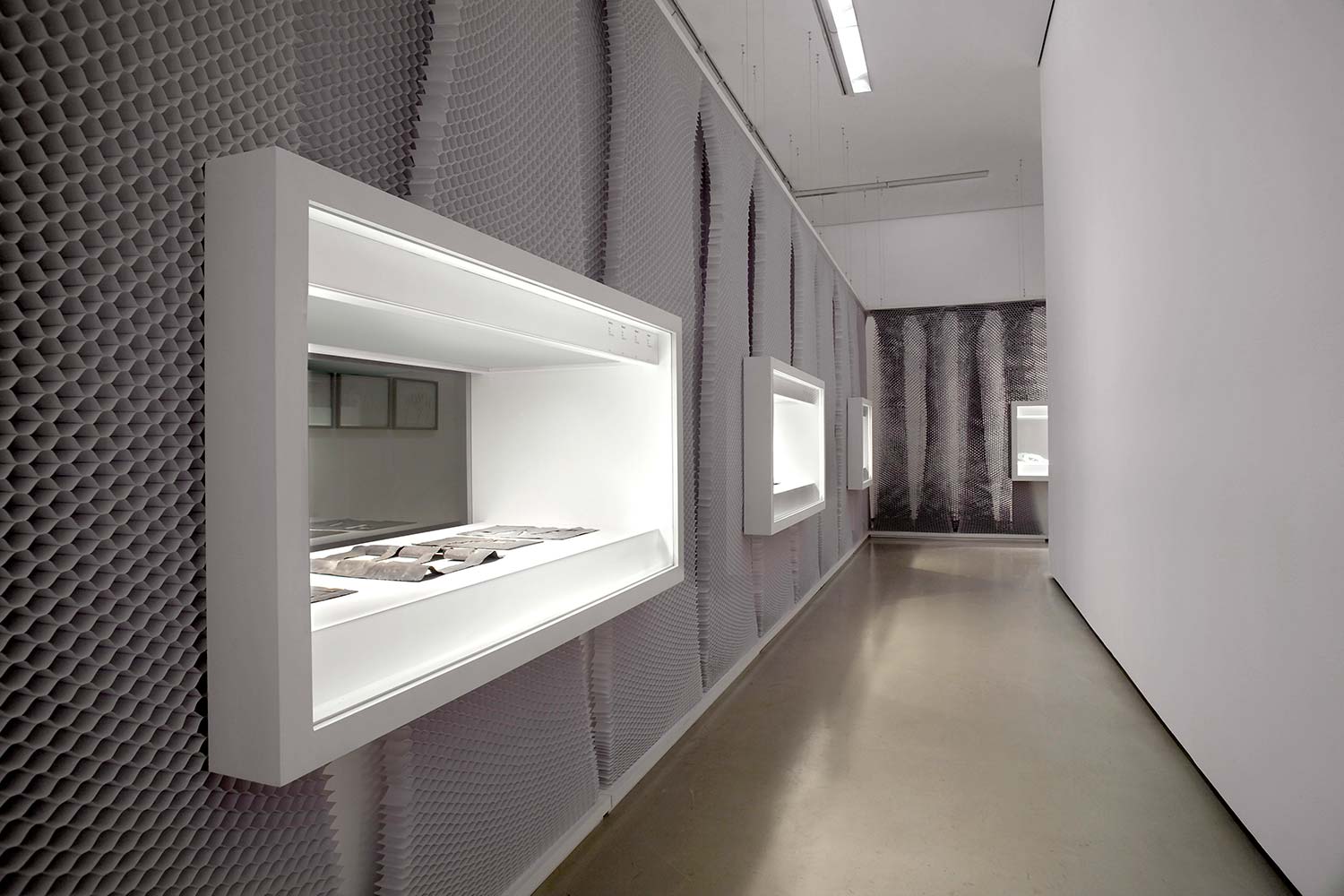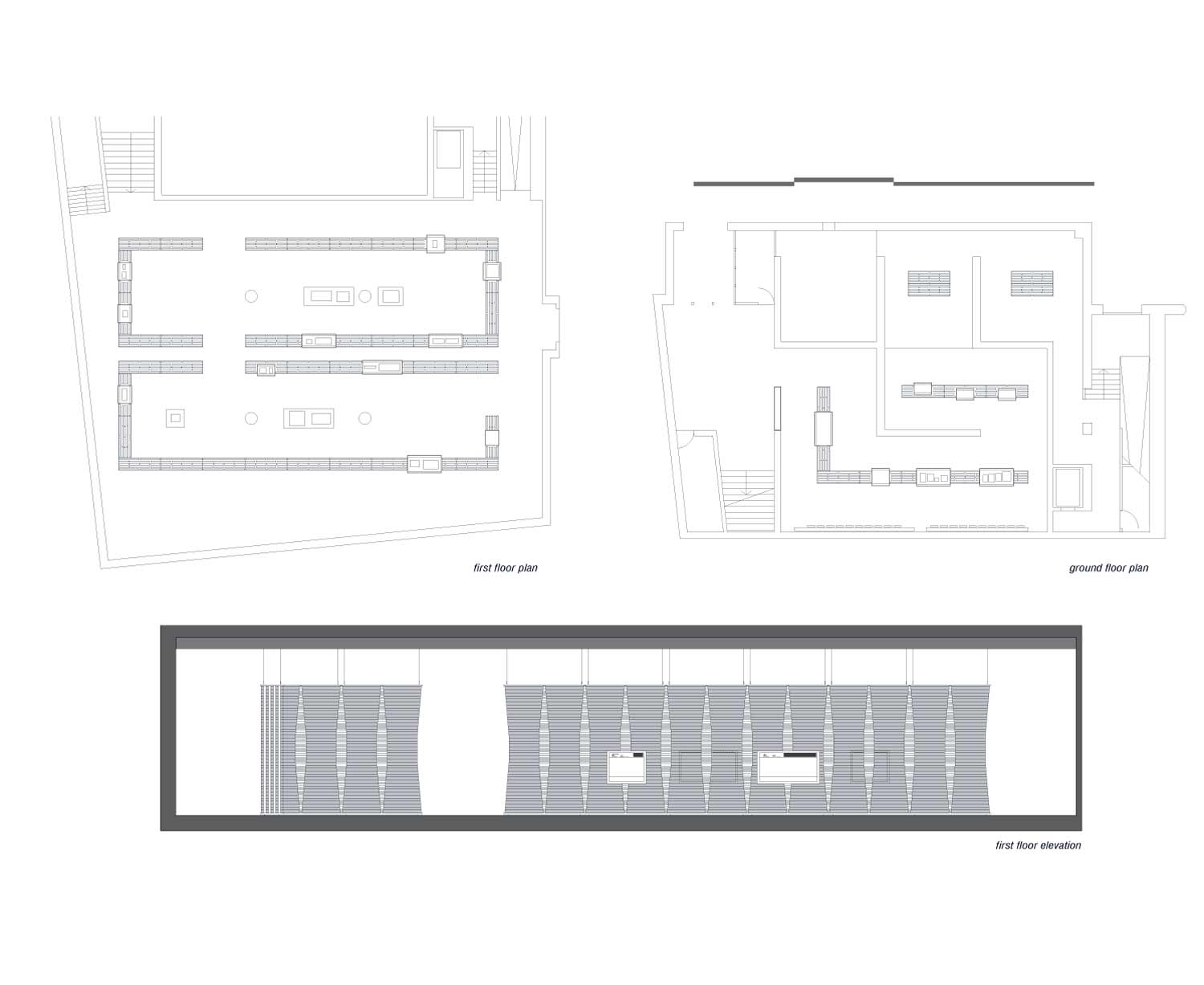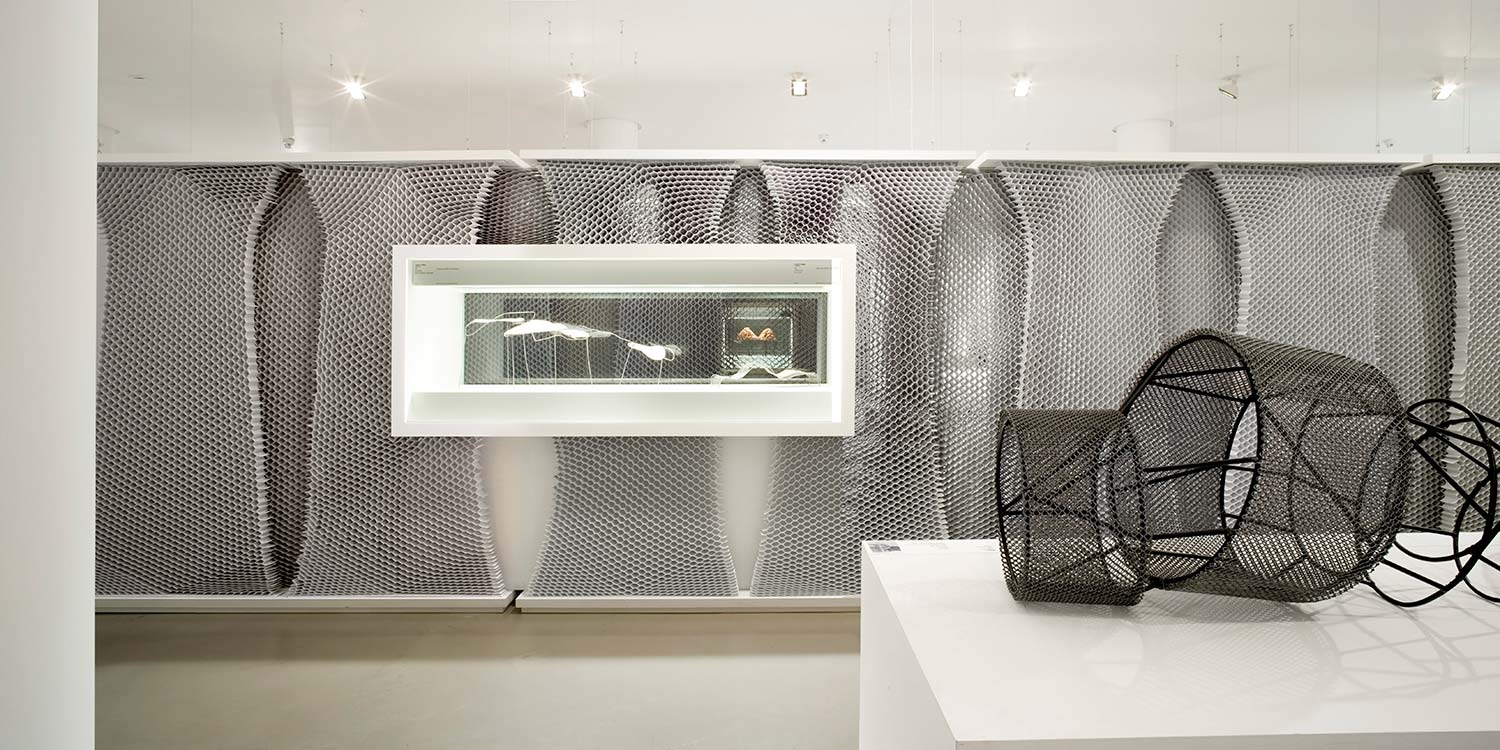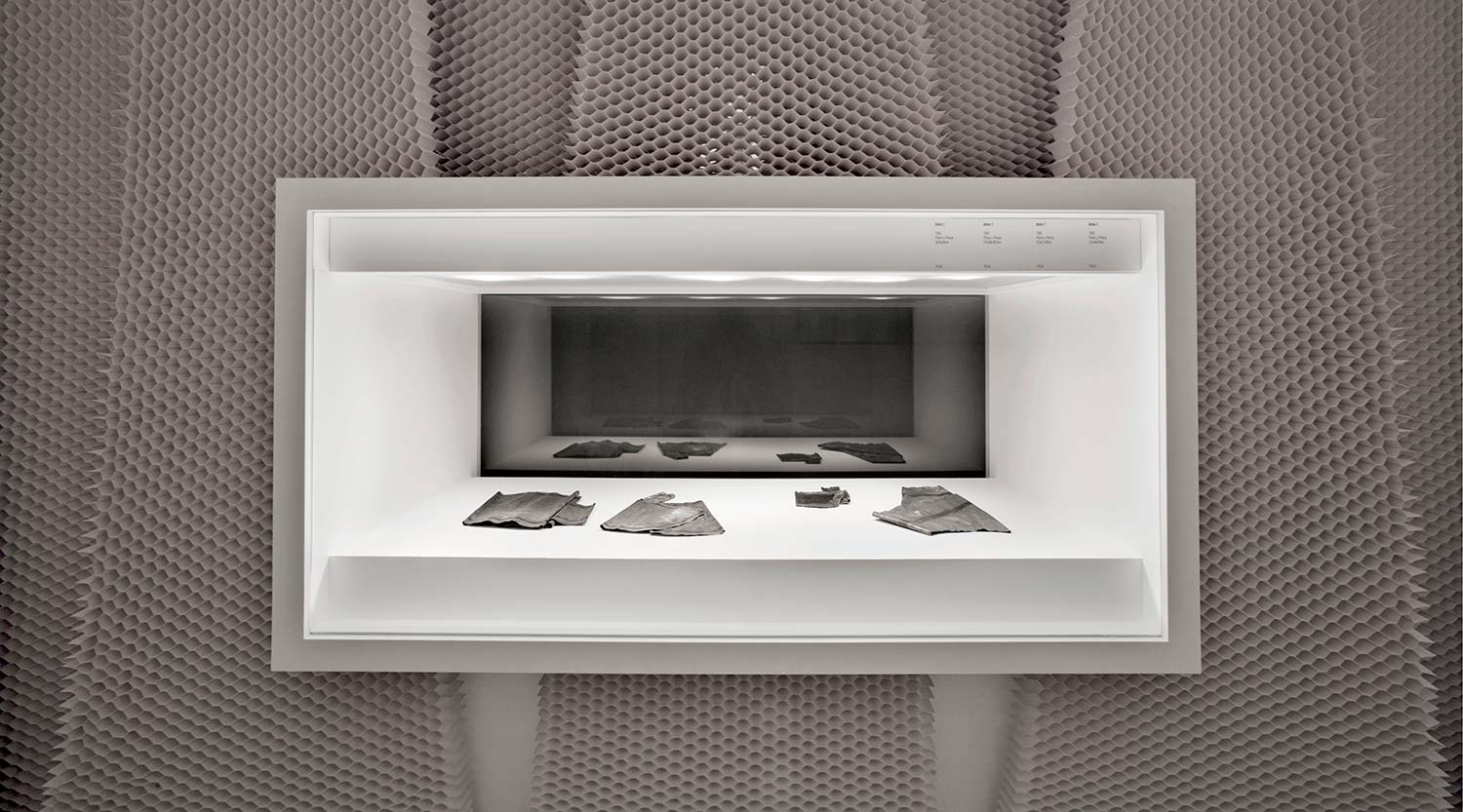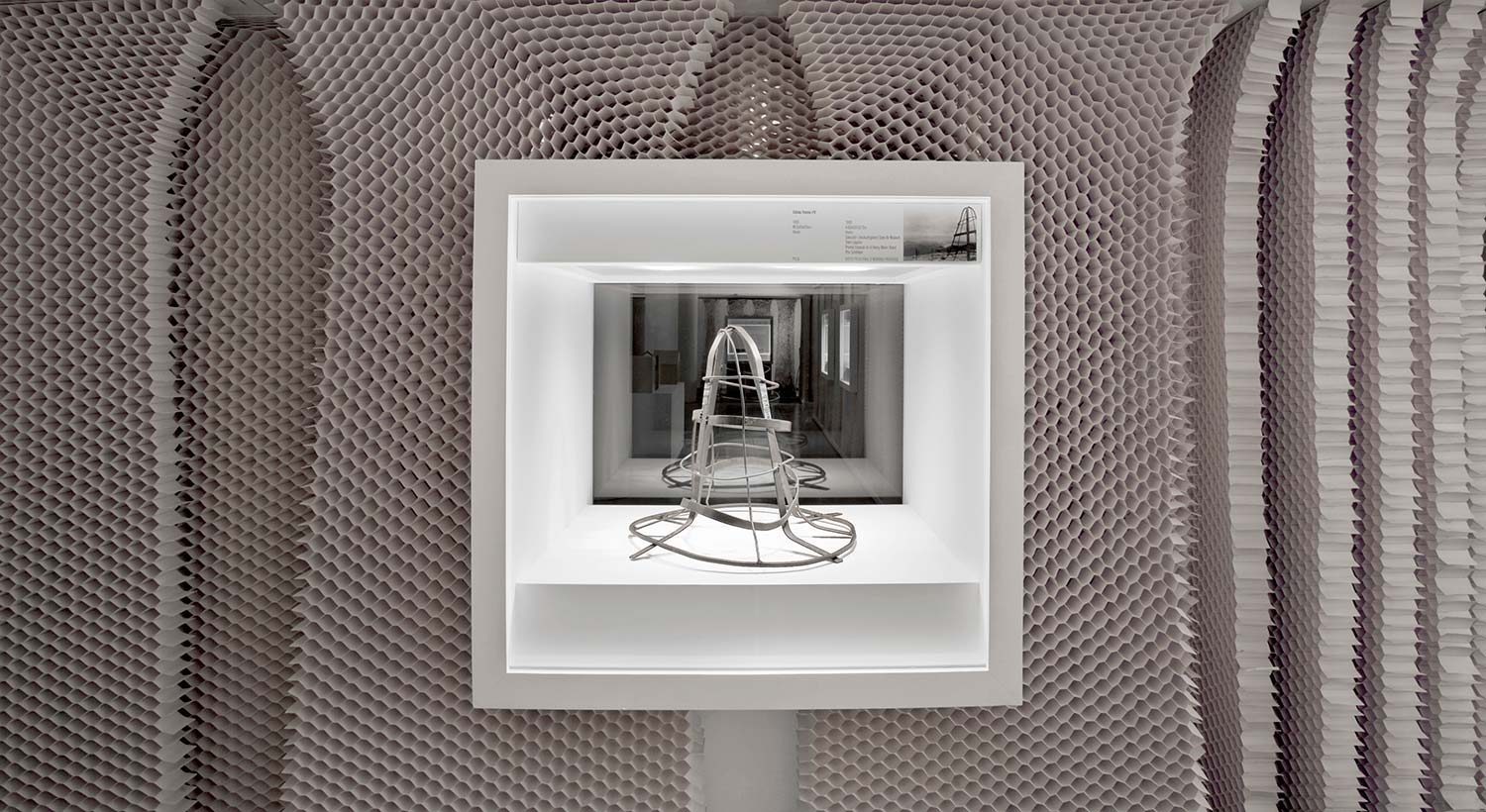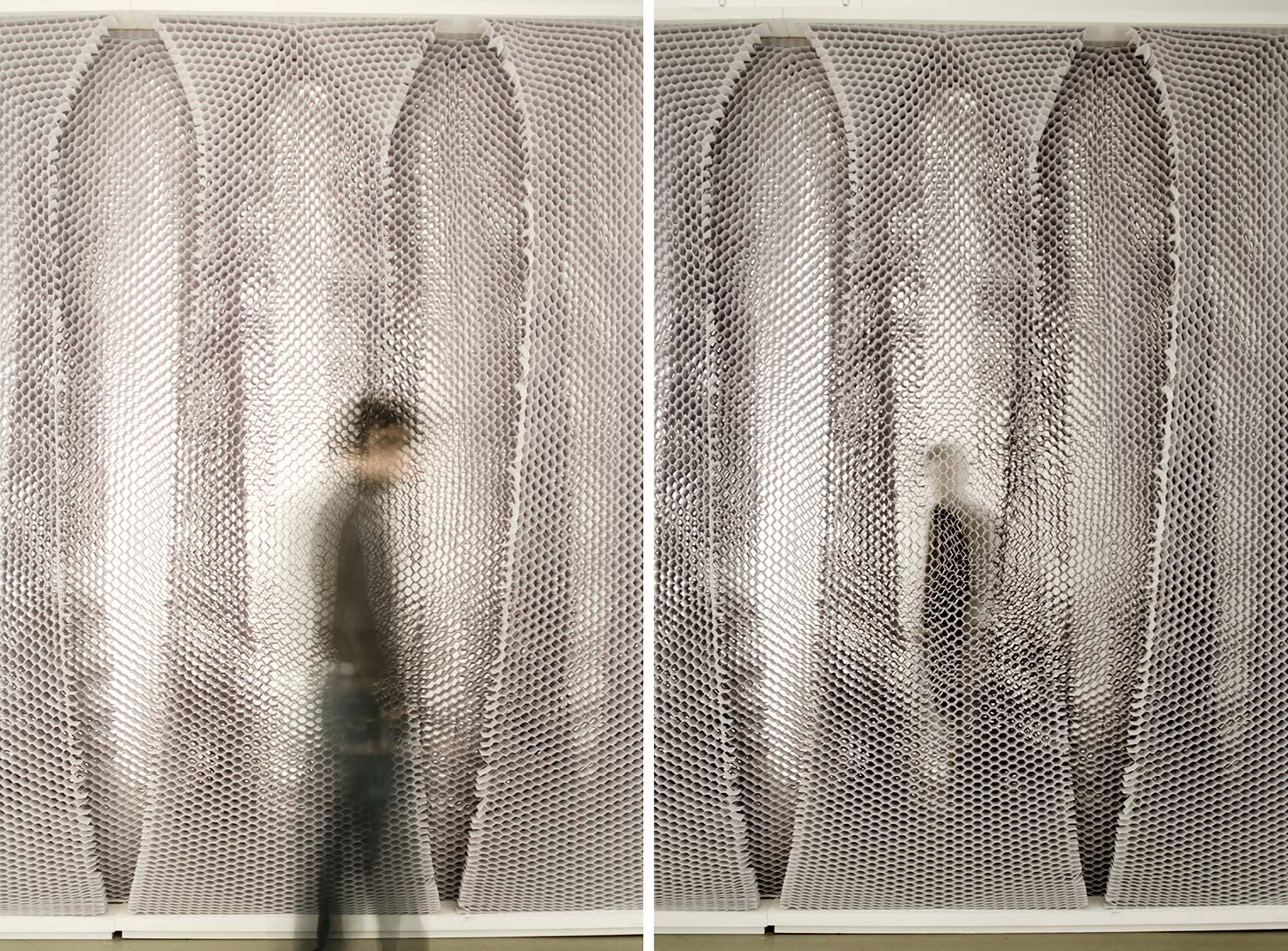

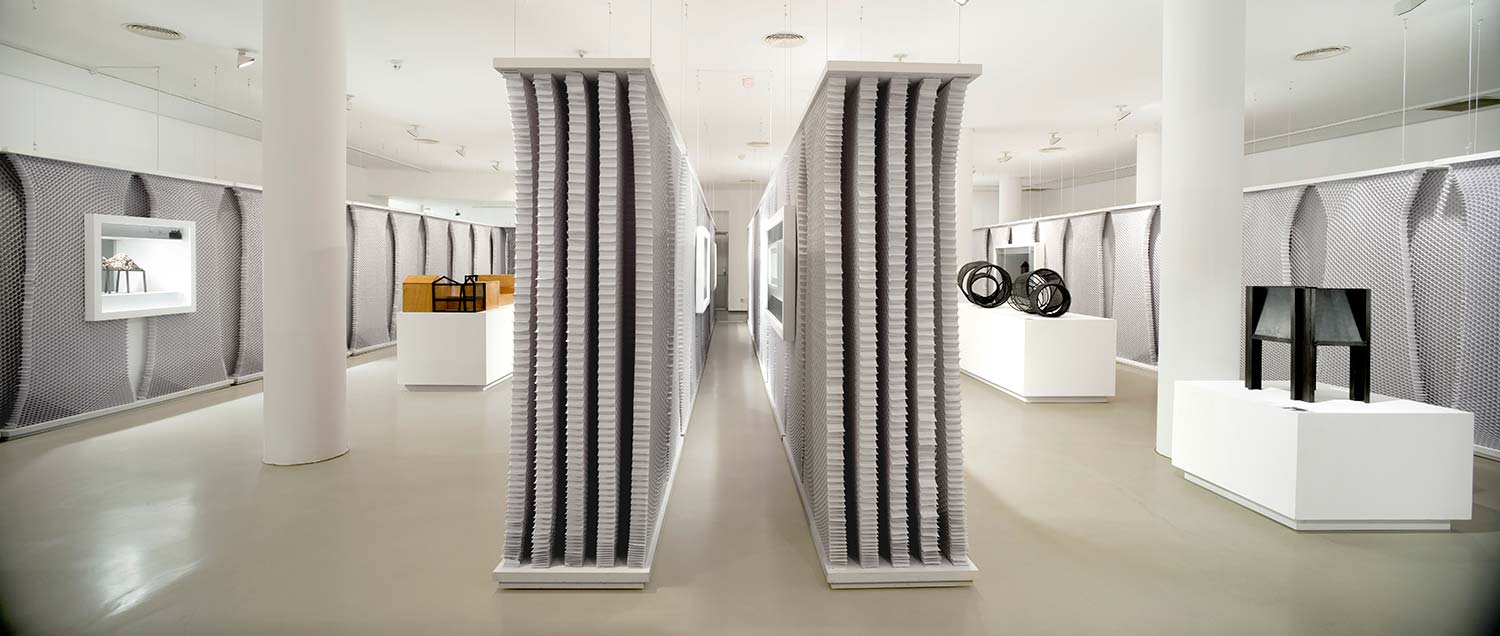


In front of two rooms with opposite spatial characteristics, an exhibition system is projected that adapts to the two spaces, giving continuity to the discourse of the exhibition. An envelope is designed that unifies the perception of space and that solves the exhibition of the pieces in its own compositional discourse.
Thus, a fragile, translucent, white, almost sacramental envelope is built to house some hard and forceful pieces.
The direct reference is the fairground lanterns, made of textured paper in the shape of a honeycomb, with its volumetry acquired based on air and ingenuity. From there to find the recycled cardboard in the shape of a honeycomb that is used to stiffen the interior of wooden doors, there is only a change of scale and a few hours of research; and an economical and recyclable solution.
With the technological and technical constraints that the choice of this role implies, some modules are designed whose dimensions are defined by their upper and lower supports, which are the standard doors with minimum dimensions. Thus, in each module 5 strips of white recycled bee paper are grouped, creating thick walls where the display cabinets are inserted. These, intensely white, read like frames suspended on the paper, framing and accentuating the tectonicity of the pieces.
This is how a neutral space is built but rich in texture and transparencies. The project plays with the double reading offered by the paper, supporting the white and solid vision with long perspectives when viewed foreshortened, and playing with moiré and transparency when viewed perpendicular. The winks that the choice and treatment of the material thus enrich the exhibition, generating cross readings between pieces through the material itself, and at the same time creating an intimacy generated by the textured envelope.

